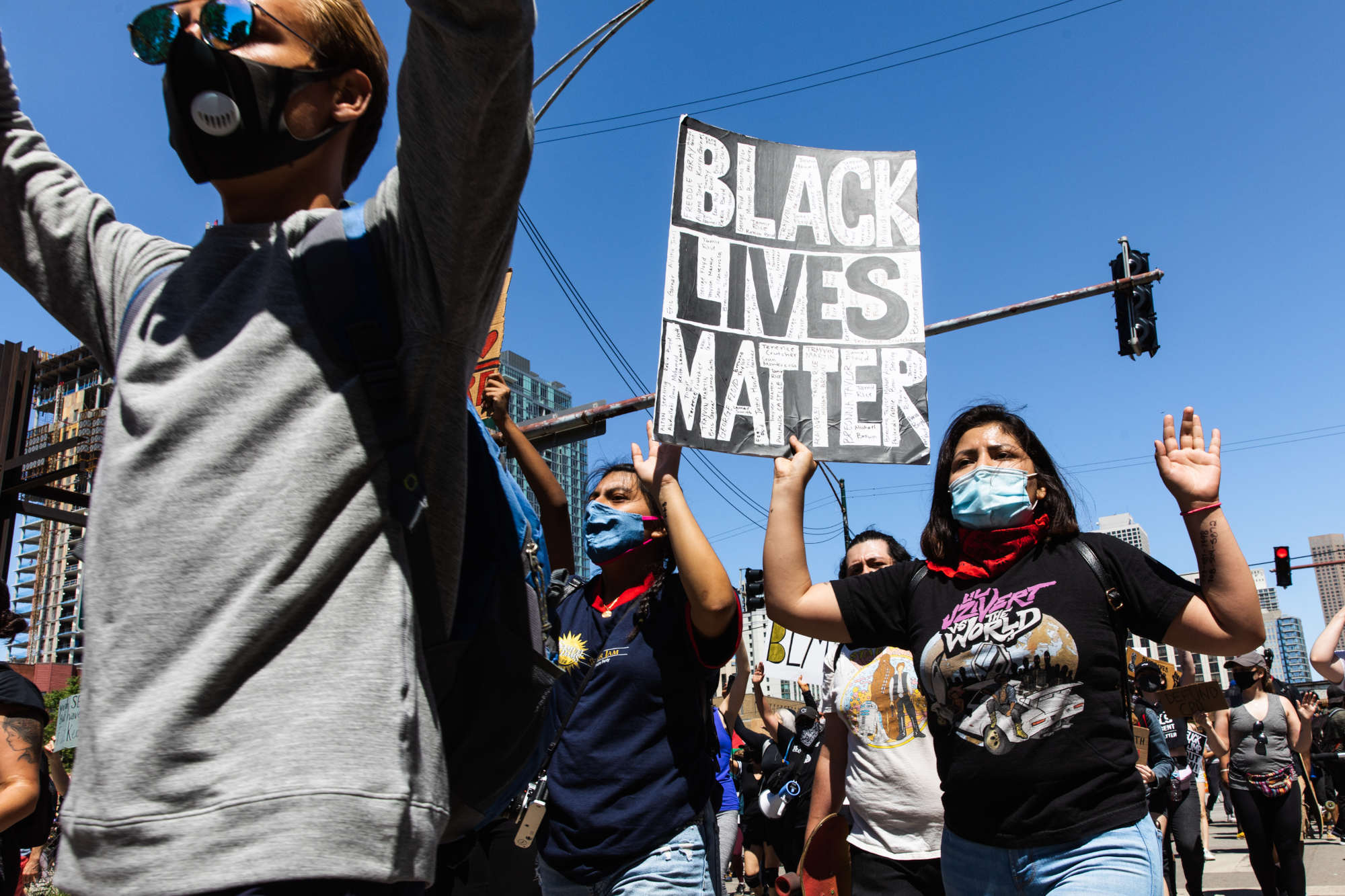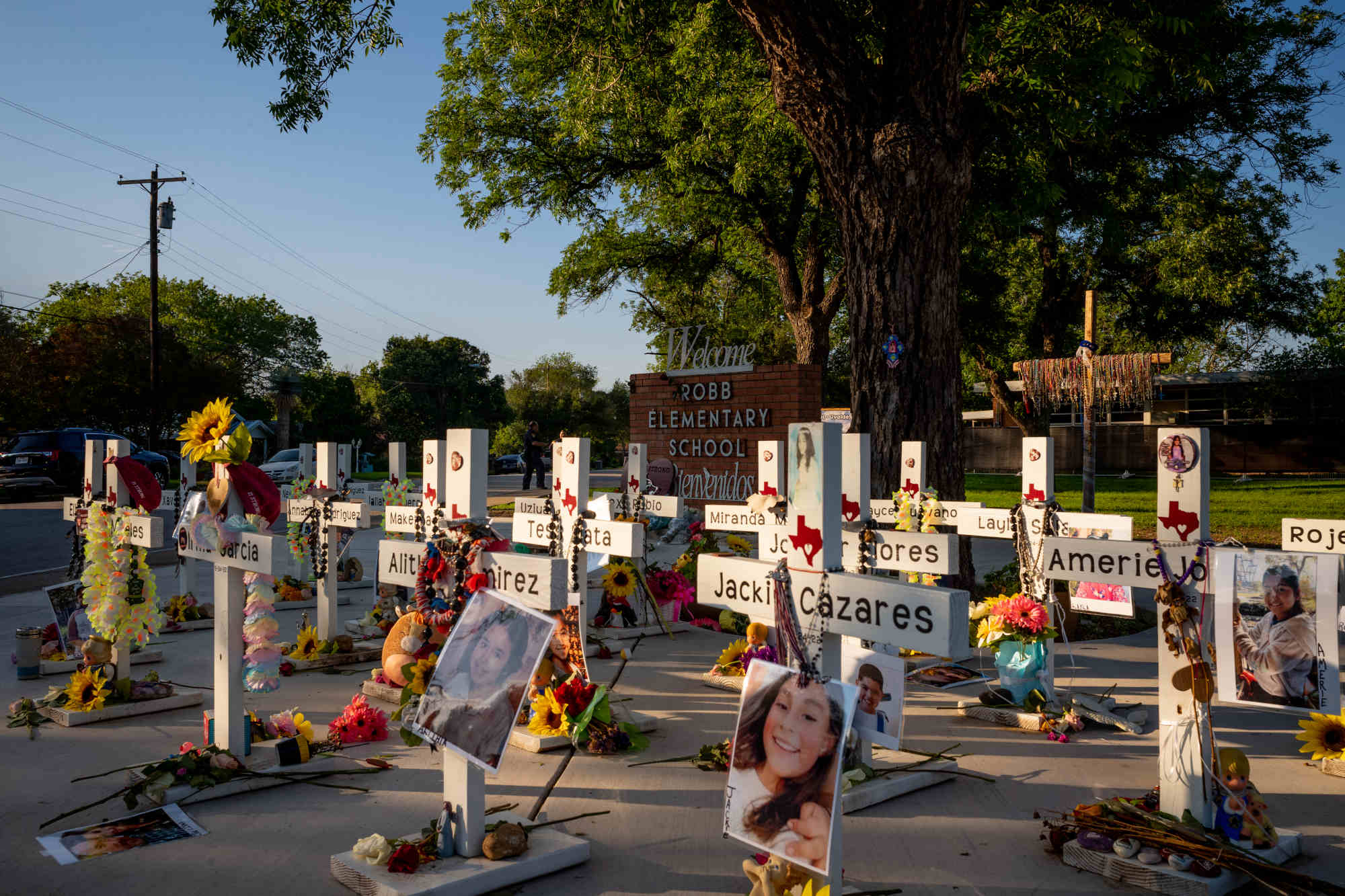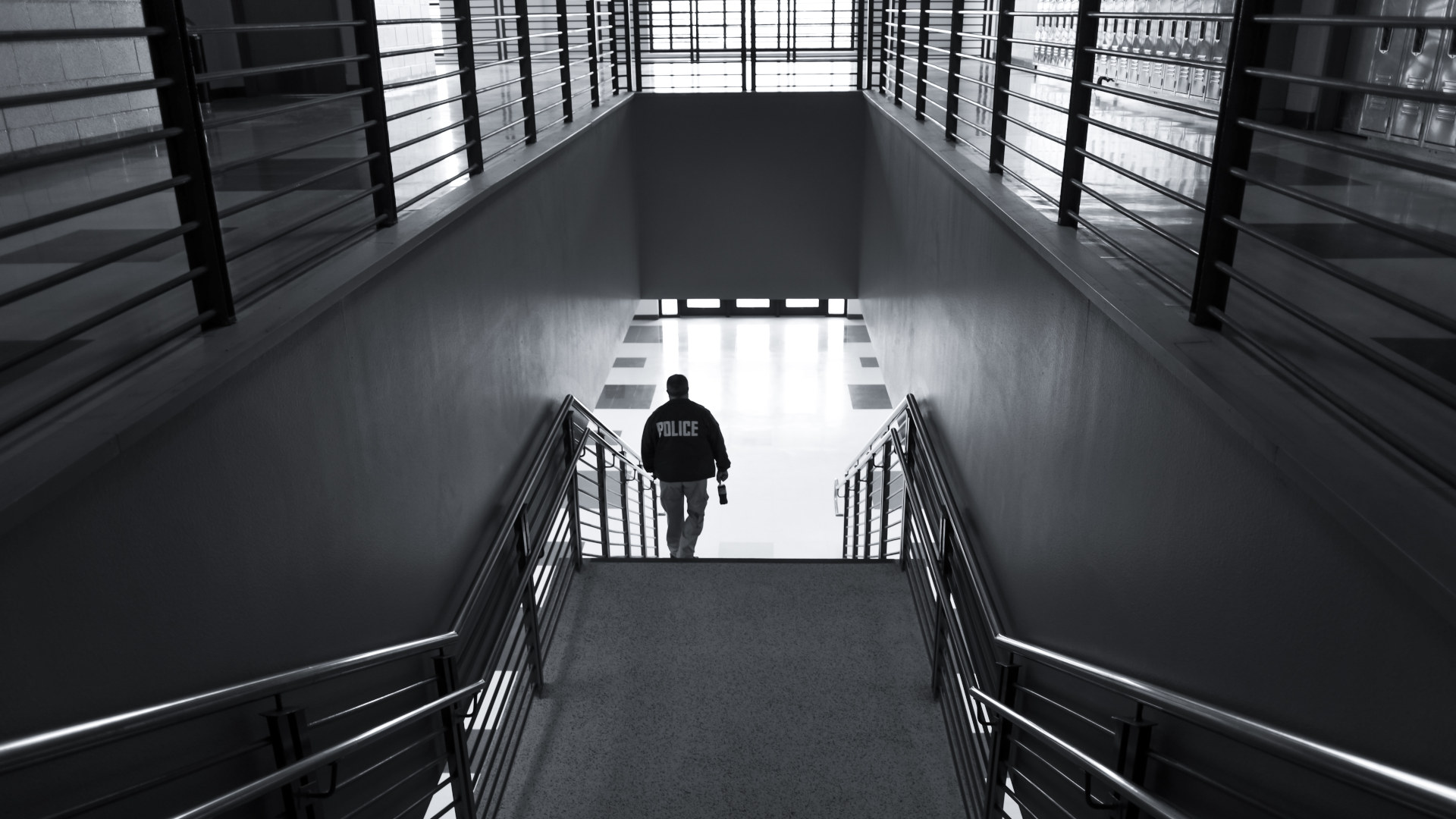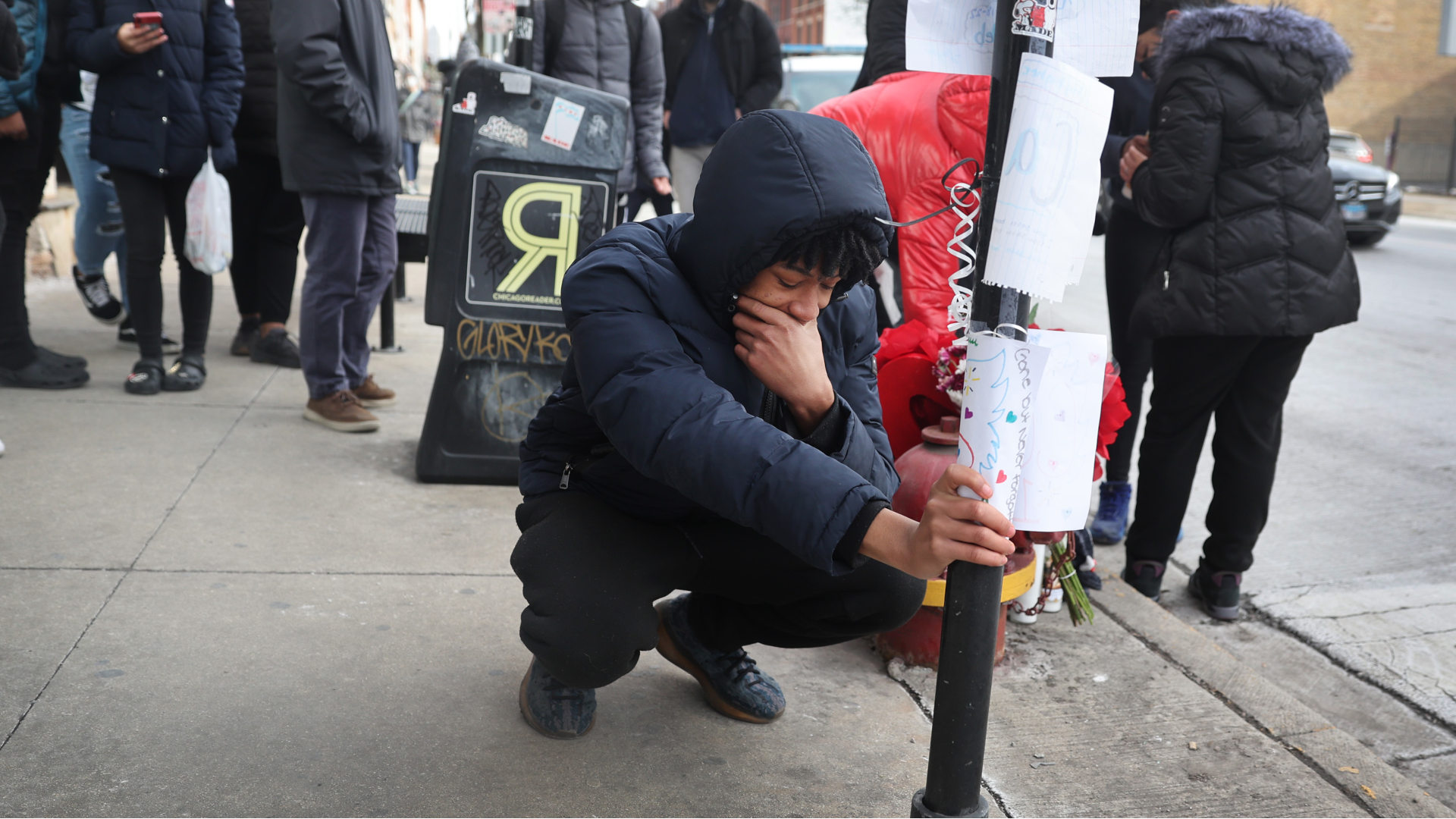Are Schools With Armed Police Actually Safer?
On the morning of Sept. 4, 2024 about a month into the new school year at Apalachee High School near Atlanta, Georgia, a 14-year-old student named Colt Gray left his algebra class at around 9:45 a.m.
About five minutes later, the student’s mother reportedly called the high school after receiving a disturbing text message from her son. School administrators dispatched two school resource officers — armed law enforcement officers assigned to public schools — to locate the student, according to CNN.
At that point, Gray allegedly returned with an AR-15-style rifle in his backpack and, after being denied entry to his algebra class, began shooting in the classroom next door. The shooter then stalked the hallways looking for additional targets, according to reports, while the officers searched the building.
The shooter reportedly “immediately” surrendered to school resource officers less than seven minutes after the first shots were fired. But not before two students and two teachers were killed, and eight students and one teacher injured.
“Our school resource officer engaged him and the shooter quickly realized that if he did not give up, that it would end with an OIS — an officer involved shooting” Barrow County Sheriff Jud Smith told CNN. “He gave up, got on the ground,” and was taken into custody.
The horrific shooting was one of at least 33 this year that has occurred in K-12 school property in which someone has been killed or injured, according to a database compiled by Education Week, resulting in 15 deaths and 48 injuries as of late October.
But even as the issue of school violence continues to echo across the country, the value of deploying armed police officers in public schools is widely debated and researched. Several recent studies suggest, in fact, that the presence of armed officers has “no impact” on school safety or day-to-day crime and contributes to a more punitive environment where students are more likely to be arrested or suspended for non-violent behavior.
As of late October this year, at least 33 shootings in which someone has been killed or injured have occurred on K-12 school property, resulting in 15 deaths and 48 injuries.
More than 41,000 schools employ at least one sworn law enforcement officer or school resource officer, according to federal data collected by the Department of Education in the 2021-2022 school year and published this year. Some districts have increased their numbers. And other cities, such as Denver, are reinstating school resource officers several years after they were removed, according to reports.
But starting around the time of nationwide protests over the murder of George Floyd by Minneapolis police officers in 2020, at least 50 school districts nationwide decided to take a different approach — decreasing funding or ending school resource officer programs, according to federal data reported in Education Week.
Chicago — among the largest public school systems in the U.S. — has emerged as a possible model. The approximately 325,000 students in Chicago Public Schools returned to classes this year without the presence of armed school resource officers for the first time since 1966. Instead, Chicago Public Schools are offering resources and funding to local school councils for social workers, mental health interventions, trauma-informed care, and social and emotional learning.
Several recent papers suggest that Chicago’s approach could have merit. One recent nationwide review of research on school-based policing, for example, found “no evidence that there is a safety-promoting component” of school-officer programs. The study — led by Benjamin Fisher, an education policy researcher at the University of Wisconsin-Madison — found that the presence of police in schools did not reduce crime, violence, weapon-related offenses or drugs.
Another recent study led by economist Lucy C. Sorensen at the University at Albany found that school resource officers reduced some types of violence but did not prevent gun violence and related crimes.
Both studies, however, found that the presence of armed school resource officers leads to more suspensions, expulsions, and arrests. Early exposure to punitive and exclusionary discipline leads to poorer academic performance and more involvement with the criminal justice system, according to experts, something critics describe as the “school to prison pipeline.”
Several recent studies suggest, in fact, that the presence of armed officers has “no impact” on school safety or day-to-day crime
A third study, led by Chris Curran, an associate professor of educational policy and leadership at the University of Florida, found that presence of armed police officers led to more student arrests and higher rates of suspensions and expulsions than the presence of armed security guards .
“Do SROs prevent shootings?” asked Sorensen, an economist and public policy analyst who has extensively researched education and crime. “We don’t know and really can’t know because they just don’t happen frequently enough for us to say that with any certainty.”
Fisher, however, maintains that “Because the evidence is increasingly pointing to police not being helpful in schools, in the real world, we ought to begin taking them out of schools.”
“I think research is going to be important to help us figure out how to do that well,” he added.
School resource officers are defined by the Department of Justice as “sworn law enforcement officers responsible for the safety and crime prevention in schools.” The officers, who are assigned to one or more public schools, are employed by local law enforcement — usually a municipal police department or county sheriff’s police department — and empowered to detain and arrest students if needed.
More than 90 percent of the schools with a law enforcement officer have an officer who is routinely armed, according to federal data, and they usually carry other restraints such as handcuffs. Some officers have special training in violence prevention, youth mental health, and adolescent brain and cognition, but the requirements vary by state.
The first school resource officer program reportedly began in 1953 in Flint, Michigan, followed by similar efforts in the 1960s in cities like Chicago, Cincinnati, and Los Angeles. The number of armed officers in public schools dramatically increased after the April 1999 mass shooting at Columbine High School near Denver, when two heavily armed high school seniors fatally shot 12 students and one teacher.
By 2022, about 48 percent of public schools employed at least one school resource officer, according to survey data collected by the National Center for Education Statistics that included about 2,700 elementary, middle, and high schools. These officers were more likely to be stationed in high schools, data shows, but are also deployed in elementary and middle schools.
More than 90 percent of the schools with a law enforcement officer have an officer who is routinely armed, according to federal data.
There were about 23,400 school resource officers nationwide at the end of the 2019-2020 school year, according to the Department of Justice’s Bureau of Justice Statistics. Almost 70 percent of them reported responding to a classroom incident in the previous 30 days, according to the data.
Chicago was one of dozens of cities that began to reconsider its policing strategies in the aftermath of the Floyd murder in May 2020, when more than 20 million people participated in protests — largely inspired by the Black Lives Matter movement around police violence and homicides.
Many of the protests in Chicago focused on the police department’s fatal and near-fatal encounters with civilians, including interventions by school resource officers. There was a growing body of research at the time that showed the $33 million school resource officer program was biased against African-American, Latino, and special needs students, and did not prevent or reduce crime.
In addition, many students said they did not feel safer in schools with the presence of resource officers, according to several studies.

The Chicago Board of Education voted in 2020 to keep its contract with the Chicago Police Department while beginning to require more specialized training and changing the selection criteria. The panel later voted in 2024 to remove all police officers from Chicago Public Schools.
Prior to 2020, resource officers were employed at 72 Chicago public high schools, according to the Chicago Justice Project. By 2024, only 39 Chicago schools employed them, according to CBS News.
Mo Canady, the executive director of the National Association of School Resource Officers, which represents thousands of school-based officers, said in an interview with Undark he was “not surprised but definitely disappointed” by the elimination of the program. “We spent a lot of time helping to train those officers, so definitely sorry to hear that.”
Meanwhile, some cities are increasing or resuming their school policing programs. Denver, for example, is restarting its program after a three-year hiatus. Denver Public Schools — which currently enrolls about 85,00 students — ended its school resource program amid concerns that African-American students were being over-policed. In April 2023, however, police officers temporarily returned to 13 high schools after a shooting, according to Chalkbeat, the non-profit education news organization.
Many students said they did not feel safer in schools with the presence of resource officers, according to several studies.
The Denver Board of Education voted soon after to officially resume the program. In the first semester of the 2024-2025 school year, the number of arrests and tickets have dropped considerably compared to 2019-20, the last full school year that school resource officers were stationed in Denver schools before the hiatus, according to reports.
Texas and Florida have enacted legislation in recent years to mandate armed security guards or police officers in response to widely publicized school shootings. The Texas law, which went into effect last year and requires an armed officer at every public school, followed the May 2022 shooting at an Uvalde elementary school that killed 19 children and two teachers.
The Florida law was passed in 2018 after the Marjory Stoneman Douglas High School shooting in Parkland in which 17 students and staff were killed. That law requires an armed individual, be it a law enforcement officer, an armed staff member, or an armed private security guard, at public schools.
Recent research suggests that the Florida legislation, and others like it, may be ineffective or even counterproductive. The broad-based study led by Fisher at the University of Wisconsin-Madison, was published in November 2023 at Campbell Systematic Reviews, a nonprofit research group that publishes open access, peer-reviewed, systematic literature reviews in crime, justice, education, and other fields.
“We looked at behavior-related outcomes, we looked at academic outcomes, and we looked at perceptions of safety at school,” said Fisher. “On average, there was no evidence suggesting that having police in schools makes schools safer. There were no real reductions in measures of crime or violence.”
The authors considered more than 420 studies for inclusion in the review. But only 32 met the criteria of having an overall school-based policing strategy to reduce crime and either a quasi-experimental design or a randomized controlled trial — the gold standard for evaluating scientific evidence. “Some of the studies that we have cited show benefits, some show detriments,” said Fisher. “But on average, there was kind of no detectable effect on school safety measures.”

The review also found that the presence of school resource officers was associated with higher levels of crime and punitive measures, such as higher levels of suspensions, expulsions, and police referrals. “We know from other research that suspension is not a helpful thing for students,” he said. “It doesn’t set them back on the straight and narrow, but it’s sort of an event that precipitates later problems in life.”
Canady of the National Association of School Resource Officers, who was a police officer for 25 years, said: “While there may be no hard data that shows” that school officers “are effective, I’m not sure I’ve seen anything that proves that they’re not effective. I was one. I know the job we do.”
“There’s no doubt in my mind that where my police car was present, where I was present in uniform, that that was certainly a deterrent to criminal activity,” he added.
Sorensen, who led the University at Albany study, was not involved with Fisher’s study, but described it as “an important contribution to what we know about school-based law enforcement.”
She added, however: “One of their main conclusions is that, on average, there is no discernible effect of SROs on measures of crime and violence. In some of our studies, we have found reductions in certain forms of violence.”
“On average, there was no evidence suggesting that having police in schools makes schools safer. There were no real reductions in measures of crime or violence.”
Sorensen’s study, published in 2023 in the peer-reviewed Journal of Policy Analysis and Management, was also authored by researchers at the RAND Corporation, the California-based global policy nonprofit institute.
The data show the presence of school resource officers resulted in an increase in the number of firearm offenses and harsher disciplinary penalties for students.
The researchers analyzed data from national surveys collected during 2013-2024 and 2017-2018 of all public schools with more than 25 students. The study found the presence of school resource officers decreased fights, physical attacks, and threats by about 30 percent. But their presence also increased firearm offenses by about 150 percent.
“We think for the gun one, that probably having a cop in the school probably means that they are looking for guns more frequently” and searching lockers and backpacks, said Sorensen. The officers “are reporting things to the school principal that otherwise might not have been reported or they’re, in some other way, changing how behavior is recorded and reported.”
Support Undark Magazine
Undark is a non-profit, editorially independent magazine covering the complicated and often fractious intersection of science and society. If you would like to help support our journalism, please consider making a donation. All proceeds go directly to Undark’s editorial fund.
The schools with resource officers also experienced between 35 and 80 percent more out-of-school suspensions and between 25 and 90 percent more expulsions compared to schools without such officers, according to the data. School-based arrests and referrals to the police were between 10 and 50 percent higher compared to schools without school resource officers.
“This is consistent with what other people have found, but it’s still a little surprising given that” school officers “aren’t supposed to have the authority to suspend or expel students,’’ Sorensen said. “They’re doing something else in the school that is making it a more punitive environment.”
“Even more concerning,” she added, “is that we find very uneven effects across different groups of students. The effects on arrests and expulsions, for instance, is several times larger for Black students than it is for White students. It’s larger for students with disabilities than for students without disabilities.”
“The effects on arrests and expulsions, for instance, is several times larger for Black students than it is for White students. It’s larger for students with disabilities than for students without disabilities.”
Other recent research suggests that it makes a difference whether schools deploy armed security guards or armed police officers. The paper published by Curran last fall in Criminology and Public Policy, a peer-reviewed journal, found that although the presence of armed security guards resulted in more suspensions and arrests than in schools without, the difference was much larger in schools with school resource officers.
The researchers, based at the University of Florida, analyzed nationwide Department of Education data on enrollment, student behavior, suspensions, and expulsions from 2017-2018.
Curran told Undark that these findings could inform “policymakers and school leaders and districts that are thinking about how to approach security.”
“Security guards may be a little less likely to be related to some of these unintended consequences,” he added, like higher rates of suspensions and expulsions.
A brief released in June by the University of Chicago Consortium on School Research analyzed the impact of the gradual reduction in school resource officers across Chicago public schools. The researchers analyzed administrative data between 2014-2015 to 2022-2023 and survey data on school climate, discipline, and perceptions of safety from 2018-2019 to 2022-23. The data show a reduction in serious discipline infractions at schools that removed its resource officers. The researchers also found that students, faculty, and staff did not feel any less safe with the removal of the officers.
The researchers also found that African-American students “were twice as likely as their peers to be in schools that had retained police presence compared to other race and ethnicity groups,” said Amy Arneson, the lead author and senior research associate at the consortium.
The study also found the schools that began removing officers in 2020 generally had fewer problems with discipline, behavior and police notifications, while schools that retained the officers generally had more discipline infractions.
“If safety isn’t first, then what can you really learn?”
“Chicago is honestly one of the few places where they have done a nice job at being thoughtful about” phasing out its school resource officer program, said Sorensen.
They are “giving schools some control over what they think improves safety at their school,” she added. “When they lost their one or two SROs, if they chose to do so, they got resources to basically replace those SROs where they could spend it on funding for social-emotional learning, or they could spend it on social workers or they could spend it on a security guard.”
Even so, it’s clear that the national debate over school resource officers isn’t going to be resolved any time soon. On Sept. 24, less than three weeks after the shootings at Apalachee High School, the Barrow County Board of Education unanimously approved the hiring of eight more officers, which would put one in each of the district’s 25 schools.
The vote came on the same day students returned to class. As one parent said after the decision, “If safety isn’t first, then what can you really learn?”











